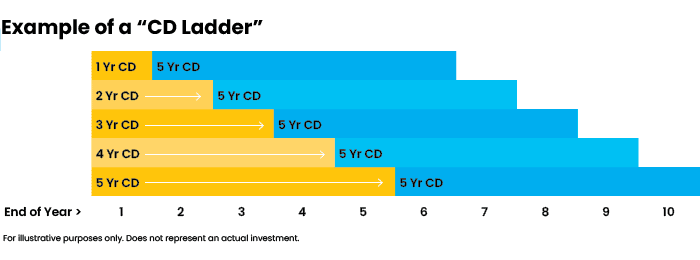For some investors, the current market turbulence might seem like the ideal time to pause or even sell positions. However, shrewd investors — or those that have navigated a full market cycle in the past — tend to have a different view. They know trying to time markets is largely a fool’s errand, even for the savviest of investors. They also know that some of the best opportunities can come during market dislocations and times of uncertainty. Rather than trying to time the markets or sitting on the sidelines with cash, these investors tend to continue investing over the full cycle.
With private commercial real estate, one of the easiest ways to help ensure you are always investing is to allocate to actively-managed real estate funds.
Funds and vintage-year diversification
One might ask why it makes sense to invest in years that produce low returns. The answer, of course, is that you only know how a year will perform in hindsight.
Even though fund managers do not have a crystal ball or window to the future, they are tasked with deploying capital during a fund’s investment period — selecting the highest-quality investments available that they believe are best suited to helping the fund meet its objectives — in whatever market conditions exist at that time. As a result, a fund’s overall performance is impacted by the market conditions that exist during its investment period — which can be anywhere from 2 to 6 years for private equity or private real estate funds — as well as by the fund manager’s ability to select investments for the fund in various market conditions. In fact, researchers state that the latter point is one of the most critical aspects of successfully investing in the private markets.
The year a private real estate fund makes its first investment is typically referred to as its “vintage” year. Some vintages may benefit from market dislocations that create opportunities to invest in real estate projects at a significant discount. For example, some studies suggest that certain types of real estate may outperform in the years following a recession. Others might be deploying capital into a challenging market with few opportunities to generate significant outperformance. While not nearly as pronounced as in the public markets, this creates some volatility in fund performance from vintage year to vintage year.
This inherent variability in vintage-year performance adds another dimension of diversification for investors to consider building into their overall investment program. Diversification can be achieved by asset class, strategy, region, developer, and even by vintage year.
Using funds to build a “vintage ladder”?
Building a vintage-year diversification program is not dissimilar to how investors may stagger investments in certificates of deposits (CDs) of different maturities and yields to build a CD ladder.

As the one-year CD matures after year 1, an investor creates a ladder by reinvesting the funds into a five-year CD with a higher yield. Then, when the two-year CD matures, they use the funds from that account to open a new five-year CD, and so on. An investor continues the process each year for as long as they want to maintain the CD ladder. Eventually, the CD ladder generates enough yield for the investor to take a portion as income as well as fund the purchase of new CDs to maintain the ladder.
To build a “vintage ladder” of private commercial real estate funds, an investor would allocate to a fund program successively over multiple years.

If the fund manager is successful at selecting investments for their fund, eventually, this kind of program can become self-funding. Each year, as distributions increase across successive vintages, more and more capital is available to reinvest in the latest vintage. And, over time, “vintage ladder” distributions may grow to a point where they may fund reinvestment as well as provide a source of income — for however long the investor would like to continue running the program. However, it is important to note that distributions are not guaranteed.
Another potential benefit of running an investment program in this way is related to the effects of the J-Curve. Each individual vintage fund will experience the J-Curve as capital is deployed over the first couple of years of its lifecycle. However, as part of a vintage laddering program, by year three or four, investors could begin receiving distributions from earlier vintages, while the most recent years experience the effects of the J-Curve.
Conclusion
Shrewd commercial real estate investors look to take advantage of current market conditions instead of fighting against them or trying to time the many ups and downs experienced over a full market cycle. One of the easier ways for investors to help ensure they are always investing throughout the market cycle is to allocate to actively-managed real estate funds. When considering an allocation to private commercial real estate funds, investors may benefit from an additional level of diversification— by time, or vintage year. By investing in multiple vintages over successive years, it is possible to build a ‘vintage ladder’ that may become self-funding as well as a source of income from program distributions.
To learn more about private commercial real estate investing and our available funds, please reach out to us at wealth@crowdstreet.com or visit us at crowdstreetadvisors.com.
About CrowdStreet Advisors
CrowdStreet Advisors provides advisors and their clients with access to curated private commercial real estate opportunities selected from CrowdStreet’s proprietary deal flow, sourced from a deep network of 300+ real estate sponsors, developers, and operators. Through its private-market products and services—REITs, thematic funds, separately managed accounts, and custom fund solutions—CrowdStreet Advisors provides unique exposure to middle-market commercial real estate (projects with gross asset values typically ranging from $40 million to $100 million), offering investments that are historically less correlated to public-market assets. For more information on CrowdStreet Advisors, visit www.crowdstreetadvisors.com.
This article was written by an employee(s) of CrowdStreet and the contents of this publication are for informational purposes only. Neither this publication nor the financial professionals who authored it are rendering financial, legal, tax or other professional advice or opinions on specific facts or matters, nor does the distribution of this publication to any person constitute an offer, recommendation, or solicitation to buy or sell any security or investment product issued by CrowdStreet or otherwise. The views and statements expressed are based upon the opinions of CrowdStreet. All information is from sources believed to be reliable. This article is not intended to be relied upon as advice to investors or potential investors and does not take into account the investment objectives, financial situation or needs of any investor. All investing involves risk, including the possible loss of money you invest, and past performance does not guarantee future performance or success. All investors should consider such factors in consultation with a professional advisor of their choosing when deciding if an investment is appropriate. CrowdStreet assumes no liability in connection with the use of this publication.
CrowdStreet, Inc. (“CrowdStreet”) offers investment opportunities and financial services on its website. Advisory services are offered through CrowdStreet Advisors, LLC (“CrowdStreet Advisors”), a wholly-owned subsidiary of CrowdStreet and a federally registered investment adviser. CrowdStreet Advisors provides investment advisory services exclusively to privately managed accounts and private funds and does not otherwise provide investment advisory services to the CrowdStreet Marketplace or its users. CrowdStreet and its affiliates do not endorse any of the opportunities that appear on this website. Investment opportunities available through CrowdStreet are speculative and involve substantial risk. You should not invest unless you can sustain the risk of loss of capital, including the risk of total loss of capital. All investors should consider their individual factors in consultation with a professional advisor of their choosing when deciding if an investment is appropriate. Private placements are illiquid investments, in that they cannot be easily sold or exchanged for cash, and are intended for investors who do not need a liquid investment.
This article should not be construed as an investment recommendation or advice, or as an offer to sell, or the solicitation of an offer to buy an investment. Offers to sell, or the solicitation of offers to buy, can only be made through official offering documents, such as a subscription agreement and a private placement memorandum, that are generally produced by the Sponsor of the investment opportunity (the “Offering Materials”). Before making an investment decision with respect to any investment on the CrowdStreet Marketplace, potential investors are advised to carefully review the Offering Materials. Investors should consult with a financial advisor, attorney, accountant, and any other professional that can help in understanding and assessing the risks associated with any investment opportunity.







